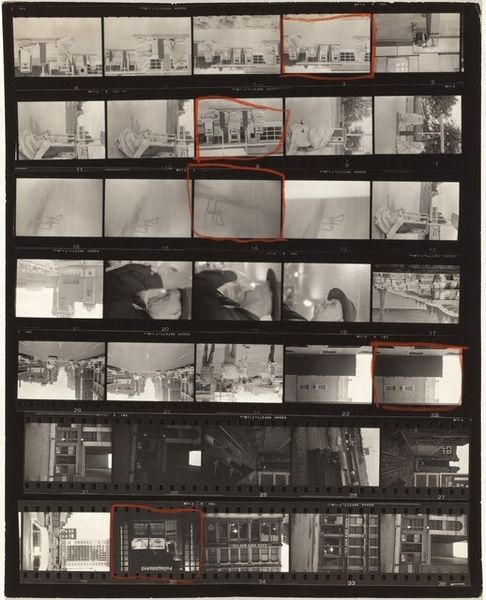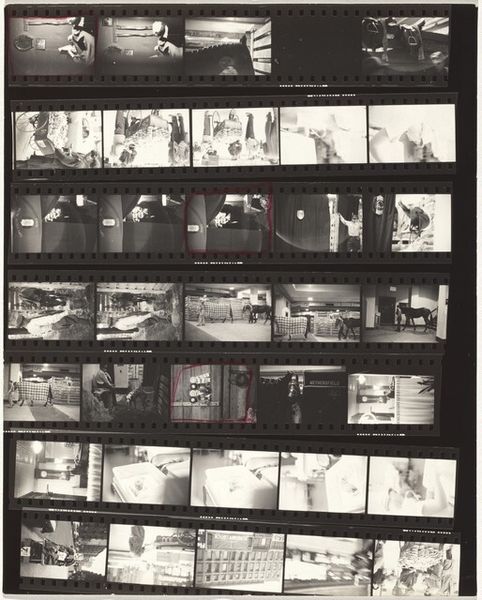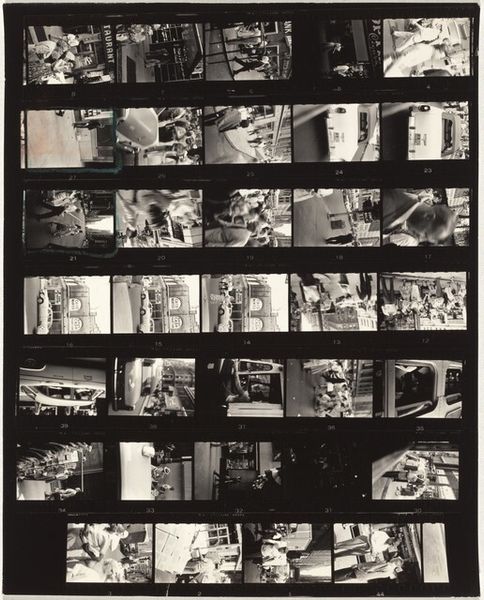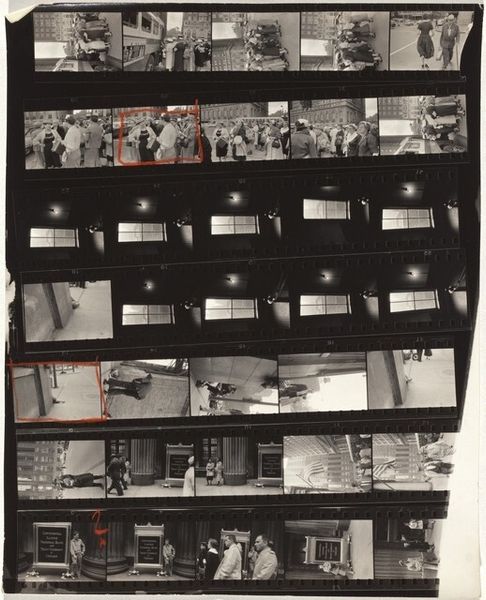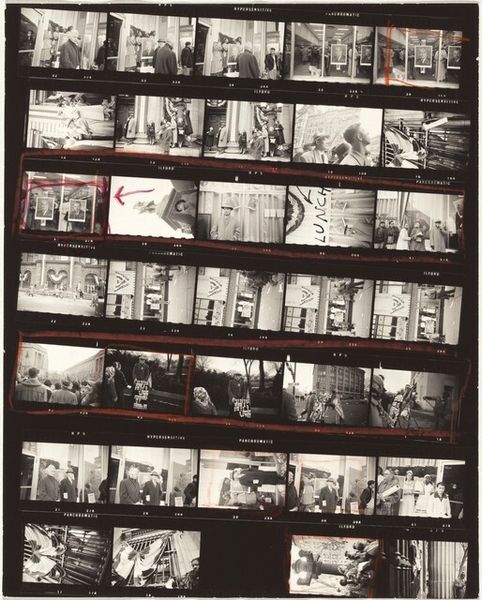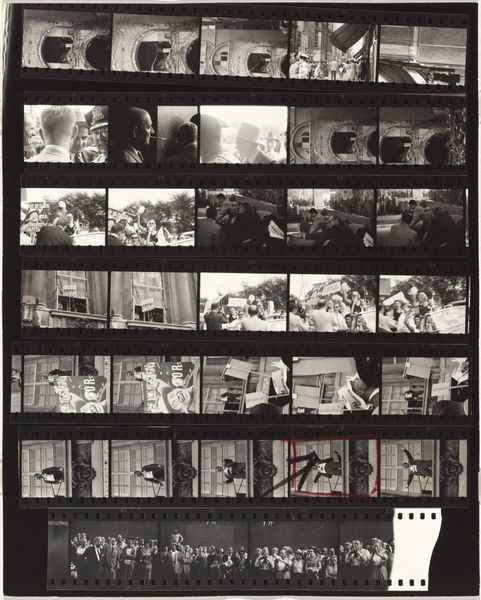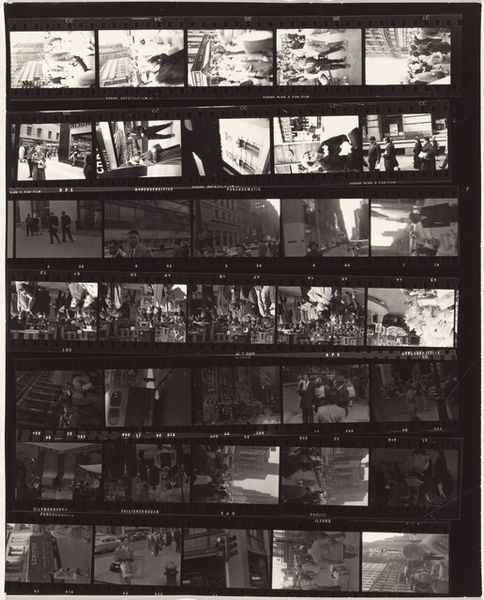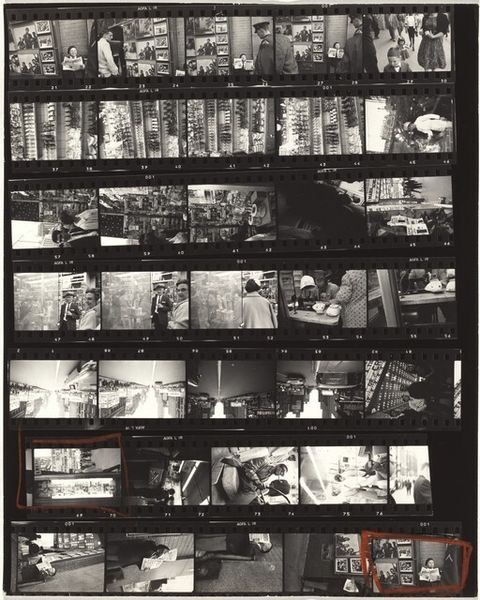
photography, gelatin-silver-print
#
film photography
#
landscape
#
photography
#
photojournalism
#
gelatin-silver-print
#
monochrome photography
#
pop-art
#
modernism
#
realism
#
monochrome
Dimensions: overall: 25.3 x 20.4 cm (9 15/16 x 8 1/16 in.)
Copyright: National Gallery of Art: CC0 1.0
Editor: Here we have Robert Frank's gelatin silver print, "Guggenheim 342--Esso oil refinery, Baton Rouge, Louisiana," from 1955. It's a contact sheet showing multiple images of the oil refinery, creating a sort of grid. I'm struck by how it simultaneously captures industrial progress and a kind of detached observation. What do you see in this work? Curator: Frank's piece operates on many levels. We have to consider the socio-economic implications of an oil refinery, particularly in Louisiana in the 1950s. Who benefits from this industry? Who is exploited? The black and white medium removes the seductive colors often used to market progress, instead leaving the viewer to really consider the grit. The multiple images in the grid format create a sense of ubiquity, forcing us to question the normalcy of industrial pollution and the impacts on marginalized communities. Does the sheer repetition highlight a loss of individual stories amidst industrial sprawl? Editor: That's a really insightful perspective. I was so focused on the aesthetic qualities – the composition, the grayscale – I hadn't deeply considered the political implications inherent in the subject matter. How does Frank’s approach, then, diverge from typical landscape photography of the time? Curator: Landscape photography often romanticized the land. Frank does the opposite; there is little beauty here. We’re invited to witness the cost of industry and consumerism on people and the land. Instead, think about who is being exposed to carcinogens while the wealthy profit, a disparity even more significant when analyzed along race and class lines. Can art function as an activist medium that allows viewers to critically look at their current circumstances? Editor: So it becomes a critical statement on both environmental and social justice? I definitely have a richer understanding of Frank's intentions now. Curator: Precisely! Thinking critically about a work, means contextualizing what you see to its contemporary situation and analyzing the impact, as well as assessing who gets to benefit.
Comments
No comments
Be the first to comment and join the conversation on the ultimate creative platform.
